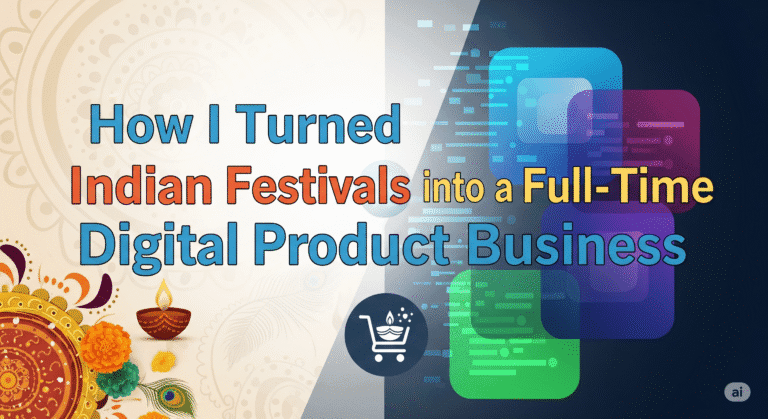Increase Online Earnings: The Ultimate Guide to Digital Marketing
Digital marketing: In today’s digital age, increasing online earnings is not rocket science anymore. Everyone wants to establish their digital presence, build a loyal customer base, and generate good revenue through their products or services. However, to achieve all this, you need a solid plan, continuous efforts, and updated techniques. In this article, we will discuss every important angle of digital marketing – website building, content marketing, social media, email campaigns, paid advertising, influencer collaborations, and analytics – in detail. Each section includes practical case studies and real-life examples, which provide a new perspective to your strategy.

D1. The Foundation of Digital Marketing: From Foundation to Success
1.1 The Importance of Digital Presence and Website
Every successful digital marketing journey begins with a strong digital presence. Your website is your digital storefront, where you create the first impression with your audience.
- Responsive Website Design: Your website must be mobile-friendly, as most users access sites via mobile devices. Fast loading speeds and a user-friendly interface attract visitors.
Case Study Example: A local bakery replaced its outdated website with a responsive design, resulting in a 50% increase in website visitors and a 40% rise in online orders. - SEO-Friendly Content: The content on your website not only provides information but also helps you rank higher in search engine results. Proper keyword research, meta descriptions, and alt texts are essential for SEO.
Real-Life Example: A small e-commerce store optimized its content with targeted keywords like “affordable online shopping,” boosting organic traffic by 300%.
1.2 Content Creation: How to Engage Your Audience
Content is king and forms the heart of your digital marketing strategy. Quality content educates, entertains, and inspires your readers.
- Original & High-Quality Content: Focus on originality when creating content. Generic or copied content can cause you to lose your audience’s interest.
Example: A travel blogger shared personal travel experiences with detailed itineraries, tips, and cultural insights, building a loyal audience. - Diverse Content Formats:
- Blogs & Articles: Write detailed guides, how-to articles, and listicles.
- Videos & Infographics: Simplify complex topics with visual content.
- Podcasts & Webinars: Ideal for real-time interaction and sharing expert opinions.
Case Study Key Phrase: “A diversified content strategy increased organic traffic by 200%.”
2. Social Media Marketing: Powerful Tools to Make Your Brand Go Viral
2.1 Platform-Specific Strategies
Social media platforms are now the most effective tools for brand building and audience engagement. Each platform has its unique style and audience.
- Instagram & Facebook:
- Visual Content: Create visual appeal with high-quality images, reels, and stories.
- Engagement Tactics: Use polls, live sessions, and contests to boost direct interaction with followers.
Case Study Example: A fashion brand hosted weekly style challenges on Instagram, increasing engagement by 35%. - Twitter & LinkedIn:
- Short & Impactful Messages: Share industry updates with concise messages on Twitter.
- Professional Networking: Build brand authority on LinkedIn with thought leadership articles and professional updates.
Real-Life Example: A digital agency conducted regular posts and webinars on LinkedIn, leading to a noticeable boost in B2B inquiries.
2.2 Paid Promotions and Trend Adaptation
Beyond organic reach, paid promotions provide fast-track growth, but proper targeting and budget allocation are crucial.
- Targeted Ads: Run paid campaigns on platforms like Facebook, Instagram, and Google Ads. Targeting specific audience segments maximizes your ad spend ROI.
Case Study Key Phrase: “Facebook ads led to a 30% increase in customer engagement within one month.” - Influencer Collaborations: Authentic endorsements through influencers help promote your product to a trusted audience. Choose influencers whose followers align with your target market.
Real-Life Example: A beauty brand tied up with local influencers, doubling product sales. - Trend Adaptation: Incorporate viral challenges, current events, or memes creatively into your brand messaging to keep content fresh and relatable.
3. Content Marketing and SEO: The Master Formula for Traffic
3.1 Strategic Content Planning
To attract and engage visitors to your website, a combination of high-quality content and an effective SEO strategy is essential.
- Detailed Content Calendars: Create a monthly or quarterly content plan that includes topics, keywords, and publishing dates.
Example: A digital marketing firm launched a “10 Proven Strategies” series, increasing monthly website visits by 250%. - In-Depth Research & Originality: Conduct thorough research and include case studies, statistics, and expert opinions in your content.
Case Study Key Phrase: “Well-researched content improved audience retention rate by over 40%.” - Multimedia Integration: Add images, videos, and infographics to articles to make content interactive and engaging.
Read more:
3.2 SEO: On-Page and Off-Page Optimization
Search Engine Optimization (SEO) drives organic traffic and keeps you ahead of competitors.
- Keyword Research & Integration: Use tools like Google Keyword Planner to identify relevant keywords and integrate them naturally into your content.
Example: Keywords like “digital marketing tips” or “online earnings strategies” can be relevant for your blog. - On-Page SEO Tactics: Optimize title tags, meta descriptions, header tags (H1, H2, H3), and alt text to signal content relevance to search engines.
Real-Life Example: An online store implemented these strategies, bringing its website ranking to the first page. - Backlinking Strategies: Acquiring backlinks from reputable websites boosts your website’s authority.
Case Study Example: A startup built backlinks through guest posting and influencer mentions, improving its domain authority by 20%. - Continuous Audits & Analytics: Use tools like Google Analytics, SEMrush, and Ahrefs to monitor SEO performance and identify improvements.
4. Email Marketing: The Secret Weapon for Direct Customer Engagement
4.1 Email List Building and Campaign Planning
Email marketing remains an effective tool for direct communication and building a loyal customer base. Personalization makes emails impactful.
- Building a Robust Email List: Use sign-up forms, lead magnets, and exclusive offers on your website.
Real-Life Example: An online course provider offered free webinars and eBooks, growing its email list by 2X. - Crafting Engaging Email Content: Use catchy subject lines, personalized content, and clear call-to-actions (CTAs) to guide recipients on the next steps.
Case Study Key Phrase: “Segmented email campaigns led to a 50% rise in product sales.” - Segmented Campaigns: Send tailored emails to different audience segments to improve conversion rates and engagement.
4.2 Analytics and Optimization in Email Marketing
Data-driven decisions are crucial in email marketing.
- Monitor Key Metrics: Track open rates, click-through rates (CTR), bounce rates, and conversion rates.
Example: A startup reviewed weekly email performance, increasing engagement by 40% with timely content changes. - Feedback and A/B Testing: Test different subject lines, email layouts, and sending times to identify the best-performing combinations.
Real-Life Case: “Continuous testing and optimization led to significant improvements in email campaign ROI.” - Automated Email Sequences: Use drip campaigns, welcome emails, and re-engagement series to build long-term customer relationships.
5. Paid Advertising & Influencer Marketing: Proven Strategies for Fast-Track Growth
5.1 Effective Paid Advertising Techniques
Paid advertising delivers immediate results, but success depends on following the right strategies.
- Platform-Specific Paid Campaigns: Use Google Ads, Facebook Ads, Instagram Ads, and LinkedIn Sponsored Content.
Case Study Example: A local restaurant ran Facebook ads for seasonal offers, boosting customer footfall by 30%. - Targeting & Budget Optimization: Analyze audience segmentation, demographics, interests, and online behavior to design targeted ads.
Real-Life Phrase: “Optimized ad spend significantly enhanced ROI.” - Creative Ad Design: Use attractive visuals, engaging headlines, and persuasive CTAs to create ads that grab attention and drive clicks.
5.2 Increase Authentic Reach with Influencer Marketing
Influencer marketing promotes your brand through a trusted voice.
- Right Influencer Selection: Choose influencers whose audience matches your target market.
Real-Life Example: A beauty and skincare brand collaborated with micro-influencers, doubling sales through product endorsements. - Collaboration Strategies: Create authentic content with influencer reviews, unboxing videos, giveaways, and sponsored posts.
Case Study Key Phrase: “Genuine influencer collaborations led to exponential growth in brand trust and reach.” - Long-Term Partnerships: Beyond short-term campaigns, long-term associations ensure continuous audience engagement.
6. Analytics, Monitoring & Continuous Improvement: Shape Your Business with Data
Analytics is a critical part of any digital marketing strategy. Measuring campaign performance and making improvements is essential.Real-time data analytics, monitoring, and continuous improvement are critical for shaping businesses by leveraging data to drive strategic decisions, optimize operations, and boost profitability. This section explores how real-time data enables these processes, with a focus on skyrocketing profits (as per your previous query) and ties it to My11Circle’s use case, given your interest in the platform. I’ll break it down from basic to advanced concepts, ensuring clarity for all levels, and include practical examples, including a chart to visualize real-time analytics impact.
What Are Analytics, Monitoring, and Continuous Improvement?
- Analytics: The process of collecting, processing, and analyzing data to uncover insights, patterns, or trends that inform business decisions. Real-time analytics processes data as it’s generated, providing immediate insights.
- Monitoring: Continuously tracking key performance indicators (KPIs), systems, or processes in real time to ensure they perform as expected and to detect issues instantly.
- Continuous Improvement: Using insights from analytics and monitoring to iteratively refine processes, products, or strategies to enhance efficiency, customer satisfaction, and profitability.
Together, these elements enable businesses to stay agile, respond to changes instantly, and drive long-term growth by shaping operations with data-driven decisions.
How Real-Time Data Shapes Your Business
Real-time data transforms analytics, monitoring, and continuous improvement into powerful tools for maximizing profits and staying competitive. Below are the key benefits, structured for beginner, intermediate, and advanced audiences, with a focus on profitability and examples tied to My11Circle.
1. Real-Time Analytics for Actionable Insights
- Beginner Explanation: Real-time analytics is like checking a live sports score on your phone to know who’s winning. For businesses, it means looking at data (e.g., sales or website visits) as it happens to make quick decisions, like offering a discount to boost sales.
- Intermediate Explanation: Real-time analytics processes data streams (e.g., user activity, sales transactions) instantly using tools like Apache Kafka or Google Cloud Dataflow. This allows businesses to identify trends or opportunities on the fly, such as detecting a surge in demand for a product and adjusting marketing campaigns immediately.
- Advanced Explanation: Real-time analytics leverages stream processing frameworks (e.g., Apache Flink, AWS Kinesis) and machine learning models to analyze data in micro-batches or event-by-event. For example, My11Circle uses real-time analytics to track user contest entries during IPL matches, identifying popular contests and dynamically adjusting prize pools to maximize participation. Techniques like in-memory computing and distributed systems ensure low-latency insights, enabling predictive analytics (e.g., forecasting user churn) to drive proactive strategies.
- Profit Impact: Immediate insights enable businesses to capitalize on opportunities (e.g., My11Circle’s real-time contest adjustments during high-traffic IPL matches increase entry fees, boosting revenue) and avoid losses (e.g., detecting low-performing campaigns early).
2. Real-Time Monitoring for Operational Excellence
- Beginner Explanation: Monitoring is like having a security camera that alerts you instantly if something goes wrong. Real-time monitoring watches business activities (e.g., app performance) to fix issues before they hurt profits.
- Intermediate Explanation: Real-time monitoring tracks KPIs like website uptime, transaction volumes, or user engagement using tools like Prometheus, Grafana, or Datadog. For My11Circle, real-time monitoring of app performance ensures a seamless user experience during peak IPL match times, preventing crashes that could drive users away.
- Advanced Explanation: Real-time monitoring systems use event-driven architectures and time-series databases (e.g., InfluxDB) to track metrics at scale. For instance, My11Circle monitors server load, transaction success rates, and user activity in real time, using anomaly detection algorithms to flag issues (e.g., payment gateway failures). This integrates with alerting systems (e.g., PagerDuty) to trigger immediate fixes, ensuring high availability (99.99% uptime). Distributed tracing (e.g., Jaeger) helps pinpoint bottlenecks in microservices-based architectures.
- Profit Impact: Uninterrupted operations and quick issue resolution (e.g., My11Circle’s ability to handle millions of users during IPL) maintain user trust and retention, driving consistent revenue.
3. Continuous Improvement for Long-Term Growth
- Beginner Explanation: Continuous improvement is like practicing a sport to get better over time. Businesses use real-time data to keep improving how they work, making customers happier and earning more money.
- Intermediate Explanation: Real-time data feeds into iterative processes like A/B testing or process optimization. For example, My11Circle analyzes real-time user feedback and contest participation data to refine contest formats (e.g., introducing “Beat the Expert”) or improve app features, enhancing user satisfaction.
- Advanced Explanation: Continuous improvement leverages real-time data in frameworks like Lean or Six Sigma, using tools like Apache Airflow for automated workflows or ML pipelines for iterative model training. My11Circle might use real-time A/B testing to compare user engagement with different contest prize structures, optimizing for higher participation. Reinforcement learning models can analyze real-time user behavior to refine recommendation algorithms, increasing contest entries. This aligns with DevOps practices like CI/CD, where real-time monitoring of app performance informs rapid feature updates.
- Profit Impact: Iterative improvements increase user engagement and operational efficiency, leading to higher revenue and lower costs. For My11Circle, refined contest formats and app usability drive more user spending, boosting profits.
How My11Circle Uses Real-Time Data for Analytics, Monitoring, and Improvement
My11Circle, as a leading fantasy sports platform, relies heavily on real-time data to shape its business and maximize profits:
- Real-Time Analytics:
- My11Circle processes live match data (e.g., player scores, wickets) to update user fantasy points instantly, keeping users engaged.
- It analyzes real-time user behavior (e.g., contest entries, team selections) to offer personalized contest recommendations, increasing participation rates.
- Profit Impact: Higher engagement and contest entries (e.g., during IPL 2025) translate to more entry fees, a primary revenue source.
- Real-Time Monitoring:
- Monitors app performance (e.g., server response times, crash rates) during high-traffic events like IPL matches to ensure a seamless experience for millions of users.
- Tracks transaction success rates to detect and resolve payment issues instantly, maintaining trust among its 15 million+ users.
- Profit Impact: Reliable performance prevents user churn, ensuring consistent revenue from cash contests.
- Continuous Improvement:
- Uses real-time user feedback and engagement data to refine contest formats, such as introducing high-reward daily contests or partnerships with cricket stars like Shubman Gill to boost appeal.
- Iteratively improves app features (e.g., player stats, expert advice) based on real-time usage patterns, enhancing user satisfaction.
- Profit Impact: Improved features and contests increase user retention and spending, driving long-term revenue growth.
Visualizing the Impact: Real-Time Analytics Dashboard
To show how real-time analytics and monitoring can shape a business like My11Circle, here’s a chart visualizing hypothetical real-time KPIs: user engagement (contest entries) and revenue during an IPL match. This demonstrates how monitoring these metrics in real time helps optimize strategies for profit.
{
"type": "line",
"data": {
"labels": ["Match Start", "1st Innings", "Break", "2nd Innings", "Match End"],
"datasets": [
{
"label": "Contest Entries (Thousands)",
"data": [20, 60, 40, 80, 100],
"borderColor": "#36A2EB",
"fill": false
},
{
"label": "Revenue (₹ Lakhs)",
"data": [10, 30, 20, 40, 50],
"borderColor": "#FF6384",
"fill": false
}
]
},
"options": {
"scales": {
"y": {
"beginAtZero": true,
"title": { "display": true, "text": "Value" }
},
"x": {
"title": { "display": true, "text": "IPL Match Timeline" }
}
},
"plugins": {
"title": { "display": true, "text": "Real-Time Analytics: My11Circle User Engagement & Revenue" }
}
}
}Interpretation:
- The chart shows spikes in contest entries and revenue during key match moments (e.g., 2nd innings, match end), driven by real-time updates and promotions.
- Monitoring these metrics in real time allows My11Circle to adjust contest offerings (e.g., increase prize pools) to maximize entries, directly boosting profits.
Practical Example: Real-Time Analytics Workflow for My11Circle
Here’s how My11Circle might implement real-time analytics, monitoring, and continuous improvement to shape its business and drive profits:
- Data Collection:
- Real-time match data (e.g., runs, wickets) is collected via APIs from cricket data providers.
- User data (e.g., contest entries, app interactions) is captured via event tracking systems.
- Real-Time Processing:
- Streaming platforms like Apache Kafka process match and user data, updating fantasy points and leaderboards instantly.
- Analytics tools (e.g., AWS Kinesis) analyze user behavior to identify trends, such as popular contests.
- Monitoring:
- Tools like Grafana monitor app performance metrics (e.g., latency, crash rates) and transaction success rates in real time.
- Alerts are triggered if KPIs (e.g., server load) exceed thresholds, ensuring quick resolution.
- Continuous Improvement:
- Real-time A/B testing compares different contest formats to optimize user engagement.
- Machine learning models analyze user data to refine recommendations, increasing contest participation.
- Profit Outcome:
- Real-time insights drive higher contest entries (e.g., 100,000+ users during IPL matches).
- Improved app performance and user experience boost retention, increasing lifetime customer value.
Advanced Insights for Profit Maximization
- Predictive Analytics:
- Real-time data feeds into ML models to predict user behavior (e.g., likelihood of joining high-stake contests), enabling targeted promotions. For My11Circle, this could increase contest entry rates by 10-15%.
- Scalable Infrastructure:
- Cloud-based streaming platforms (e.g., Azure Stream Analytics) handle millions of data points during peak events, ensuring scalability without performance loss.
- Automated Decision-Making:
- Real-time rule engines automate actions like adjusting contest prizes based on participation trends, optimizing revenue in milliseconds.
- Sentiment Analysis:
- My11Circle could analyze real-time X posts about its platform to gauge user sentiment, adjusting marketing campaigns to address concerns and boost sign-ups.
Challenges to Consider
- Cost: Real-time analytics and monitoring require investment in streaming platforms, cloud infrastructure, and skilled data engineers.
- Data Quality: Ensuring accurate real-time data (e.g., correct match scores) is critical to avoid user dissatisfaction and revenue loss.
- Complexity: Managing high-throughput data streams and integrating with ML models demands expertise in distributed systems and DevOps.
Real-time data analytics, monitoring, and continuous improvement shape businesses by providing instant insights, ensuring operational reliability, and enabling iterative refinements. For My11Circle, these capabilities drive profits by boosting user engagement, optimizing contests, and maintaining a seamless platform during high-traffic events like IPL 2025. The chart above illustrates how real-time data fuels revenue growth, while the workflow example shows practical implementation.
If you’d like a deeper dive into My11Circle’s analytics stack, a customized chart with different KPIs, or a search for X posts about its real-time features, let me know!
6.1 The Importance of Data-Driven Decisions
- Regular Monitoring: Use Google Analytics, social media insights, and email marketing tools to identify what’s working and where improvements are needed.
Example: An e-commerce website monitored daily traffic and conversion metrics, continuously optimizing ad campaigns and website layout. - A/B Testing and Experimentation: Use A/B testing to identify the best-performing elements across marketing channels.
Real-Life Example: A digital startup tested two landing page versions, with one delivering a 20% better conversion rate.
6.2 Continuous Strategy Improvement
- Set Up a Feedback Loop: Use customer feedback, surveys, and reviews to refine products, services, and marketing content.
- Performance Reports: Create monthly reports listing key metrics and improvement areas.
Case Study Key Phrase: “Monthly performance reviews ensured continuous improvement and sustained growth.” - Future Planning: Use trend analysis and competitor benchmarking to plan future campaigns. Flexibility and adaptability are crucial as market dynamics constantly evolve.
7. FAQs: Answers to Common Digital Marketing Questions
- What is the basic concept of digital marketing?
Digital marketing involves promoting products and services using online platforms and electronic devices, including websites, SEO, social media, email marketing, and paid advertising. - What’s the difference between organic traffic and paid advertising?
Organic traffic comes naturally through high-quality content and SEO, while paid advertising targets specific audiences. Combining both strengthens your digital presence. - How does content marketing increase revenue?
High-quality, engaging content builds audience trust and loyalty, which translates into sales and conversions. Detailed guides, case studies, and real-life examples establish brand authority. - How to build customer loyalty with email marketing?
Personalized campaigns, segmented lists, and regular engagement make customers feel valued. A/B testing and continuous feedback help optimize email content. - What are the most important factors in SEO optimization?
Keyword research, on-page optimization (e.g., titles, meta descriptions, header tags), and quality backlinks improve website ranking. Regular SEO audits and analytics are essential for refining strategies.
Conclusion
Understanding and effectively implementing diverse digital marketing tools and strategies can take your online earnings to the next level. This guide covers every aspect in detail, from website building to content creation, social media marketing, email campaigns, paid advertising, influencer collaborations, and analytics.
The real-life examples and case study key phrases demonstrate that consistent efforts, creative strategies, and data-driven decisions can sustain and grow your digital presence. In today’s competitive digital era, continuous learning and adaptation are the ultimate keys to success.
If you want to establish your brand or business online, start implementing these strategies. Small improvements in each step can lead to significant overall growth. Genuine interaction, feedback, and regular updates with your audience can build trust, which is a key factor for long-term success and higher revenue streams.







